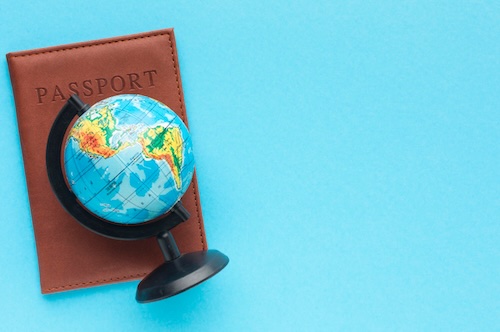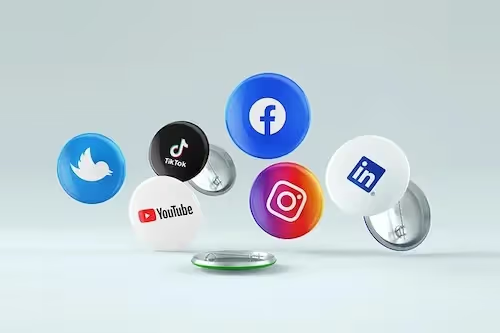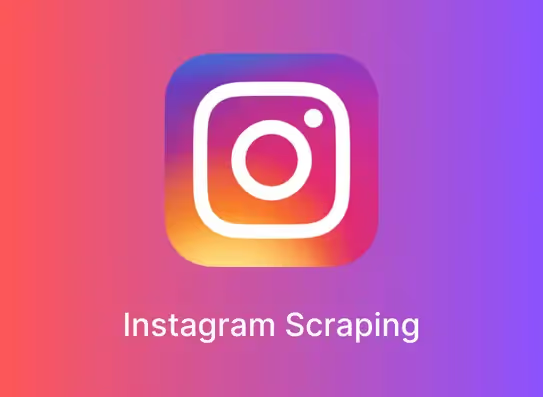Introduction
Creator marketing has moved far beyond product placements and hashtag campaigns. In 2025, it is a central pillar of brand growth strategies, shaping consumer trust, cultural conversations, and long-term partnerships. Yet with its rise comes escalating risks: influencer scandals, brand backlash, online feuds, and PR missteps that can wipe billions from market value overnight.
To thrive in this evolving landscape, brands need risk-tech—the integration of advanced tools, APIs, and automated vetting solutions that make partnerships safer, smarter, and more transparent. This blog explores how creator marketing and risk-tech are converging in 2025, the trends shaping the industry, and the actionable steps brands must take to safeguard their reputation while maximizing creator collaborations.
Why Creator Marketing Needs Risk-Tech in 2025
Creator marketing is booming, but the risks are equally magnified. According to the Behind the Hashtag report, scandals tied to influencers such as Olivia Jade, James Charles, and Chiara Ferragni led to major losses for global brands. These cases show that without proper vetting, partnerships can spiral into PR crises.
Three key reasons risk-tech is now indispensable:
- Online Backlash Costs Billions
- A single controversy can lead to global boycotts, stock market losses, and consumer walkouts. For example, a viral campaign misstep led to an $11B drop in market cap for AB InBev in just weeks.
- The Permanence of Digital Footprints
- Past tweets, old YouTube clips, or resurfaced interviews can damage trust years after content was posted. As seen in Zoella’s and Samantha Hudson’s controversies, historical vetting is non-negotiable.
- Rising Regulatory Pressure
- With Italy’s Ferragni Law (2024) regulating influencer advertising, governments are stepping in. Brands are legally obligated to ensure creators’ claims are transparent, accurate, and not misleading.
Lessons from Past Creator Scandals
2025 is not just about looking ahead—it’s about learning from the brand safety failures of the past decade.
- Olivia Jade & Sephora/TRESemmé: Brands overlooked her online persona, which already showed little interest in academics, before the college admissions scandal erupted.
Lesson: Vet values and tone, not just follower counts. - James Charles & Morphe: His impulsive online behavior and repeated controversies should have raised red flags much earlier.
Lesson: Diversify partnerships and don’t bank on volatile creators. - Chiara Ferragni & Balocco: A misleading charity campaign sparked fraud allegations and a new national law.
Lesson: Fact-check claims in campaigns, especially around sensitive themes like charity and social causes. - Remi Bader & Body Positivity Backlash: Fans felt betrayed when her narrative shifted after bariatric surgery.
Lesson: Monitor narrative alignment to avoid contradiction with brand messaging. - Kendall Jenner & Pepsi: A tone-deaf ad trivialized the Black Lives Matter movement.
Lesson: Ensure ideological alignment and cultural sensitivity in campaigns. - Sondos Alqattan & MAC Cosmetics: Her comments on workers’ rights highlighted the lack of cultural sensitivity in global collaborations.
Lesson: Vet cultural perspectives and regional contexts.
Each of these scandals reinforces the need for systematic creator risk management—and that’s where APIs and risk-tech come into play.
The Rise of Risk-Tech in Creator Marketing
Risk-tech isn’t just a buzzword—it’s a set of technologies built to safeguard brand partnerships. In 2025, leading brands are adopting AI-driven risk analysis, automated background checks, and API-powered social screening.
Key Features of Modern Risk-Tech:
- Comprehensive Social Screening
- Review creators’ content across platforms, dating back to their earliest posts.
- Identify sensitive topics like hate speech, substance use, or politically charged commentary.
- Example: Phyllo’s Social Screening API scans text, video, and audio content with AI-driven insights.
- Sentiment & Audience Analysis
- Go beyond engagement numbers by understanding how audiences actually perceive a creator.
- Detect red flags like recurring negative sentiment or controversial comment threads.
- Fake Follower Audits & Risk Scoring
- Separate real reach from inflated vanity metrics.
- Assign creators a brand safety score that weighs credibility, authenticity, and risk levels.
- Continuous Monitoring
- Risk management doesn’t end at signing a contract. Ongoing monitoring ensures that new controversies, affiliations, or content pivots don’t blindside a brand.
How APIs are Shaping the Future of Creator Vetting
The creator economy runs on data, and APIs are the pipelines that make this data accessible. In 2025, APIs are the backbone of automated influencer vetting, creator risk scoring, and campaign oversight.
Examples of API-Powered Vetting:
- Influencer Vetting APIs
- Fetch historical content and analyze red flags.
- Ensure ideological and value alignment.
- GetPhyllo’s Influencer Vetting API enables brands to check content back to the creator’s earliest days online.
- Social Media Intelligence APIs
- Aggregate conversations, hashtags, and mentions around creators.
- Detect brewing controversies before they hit mainstream media.
- Phyllo’s Social Media Intelligence API offers real-time insights into creator reputation.
- Social Screening APIs
- Perform automated background checks across platforms, scanning video, audio, and text for harmful content.
- Phyllo’s Social Screening is built for enterprise-scale brand safety.
- Social Listening APIs
- Monitor cultural currents and audience sentiment shifts.
- Essential for aligning campaign narratives with social context.
- Explore Phyllo’s Social Listening API.
2025 Trends in Creator Marketing & Risk-Tech
- Shift from “Influencer” to “Creator”
- The term “creator” is becoming more inclusive, covering not just influencers but podcasters, streamers, and niche community leaders.
- Brands must balance SEO value of “influencer” with the broader brand positioning around “creator.”
- AI-Powered Content Vetting
- AI now reviews massive datasets of past posts, captions, and even ephemeral stories.
- This reduces manual vetting time and enhances accuracy in detecting risks.
- Narrative Alignment as a Metric
- Beyond demographics, brands evaluate whether a creator’s personal story aligns with brand ethos.
- Example: Body positivity advocates must authentically maintain consistency to avoid consumer backlash.
- Globalization of Creator Risks
- As brands collaborate across markets, cultural sensitivities become more complex.
- Risk-tech must integrate regional context, local politics, and social justice themes into vetting.
- Regulatory Scrutiny & Legal Vetting
- With laws like Italy’s Ferragni Law, compliance vetting is as important as content vetting.
- Expect more regional laws regulating disclosure, charity claims, and ad transparency.
The Brand Safety Checklist for 2025
A modern brand safety checklist goes beyond basic metrics. According to Behind the Hashtag, here’s what brands should include:
- Pre-Partnership Vetting
- Audit all historical content.
- Review stances on women’s rights, human rights, cultural sensitivity.
- Analyze audience demographics and deal-breakers.
- Contractual Safeguards
- Define off-limit topics.
- Document brand and creator roles in case of PR crises.
- Ongoing Monitoring
- Regularly review content and affiliations.
- Stay alert to cultural and political shifts.
- Crisis Playbooks
- Act early, not late.
- Prepare PR statements with clarity and accountability.
- Know when to cut ties gracefully.
- Technology Integration
- Use APIs for real-time scanning, sentiment analysis, and automated alerts.
- Partner with trusted risk-tech providers like Phyllo for scalable brand safety solutions.
Conclusion
In 2025, creator marketing and risk-tech are inseparable. Brands that treat creator partnerships as simple hashtag deals risk falling into the same traps that have cost billions in the past. By integrating APIs, AI-driven vetting, and continuous monitoring, marketers can safeguard their reputation while still reaping the benefits of authentic creator collaborations.
The future belongs to brands that see creators not just as reach multipliers, but as long-term partners—vetted, trusted, and aligned with their values. With risk-tech as the foundation, the creator economy of 2025 can thrive with both impact and integrity.
FAQs
1. What is risk-tech in creator marketing?
Risk-tech refers to the use of advanced technologies—such as AI, APIs, and automated screening tools—to identify, assess, and manage risks in creator and influencer partnerships. It helps brands vet historical content, monitor ongoing activity, and ensure alignment with brand safety guidelines.
2. Why is creator vetting important for brand safety in 2025?
Creator vetting ensures brands partner with creators who align with their values, audience expectations, and compliance standards. Without proper vetting, brands risk scandals, PR crises, and consumer backlash—as seen in controversies involving Olivia Jade, James Charles, and Chiara Ferragni.
3. How do APIs improve influencer and creator vetting?
APIs allow brands to access and analyze vast amounts of creator data across platforms. Tools like Phyllo’s Social Screening API and Influencer Vetting API enable automated checks of historical posts, sentiment analysis, fake follower audits, and continuous monitoring—reducing manual work and increasing accuracy.
4. What trends are shaping the future of creator marketing in 2025?
The biggest trends include the shift from “influencer” to “creator,” AI-powered risk detection, narrative alignment as a key metric, cultural sensitivity in global collaborations, and increasing regulatory scrutiny with laws like Italy’s Ferragni Law.
5. How can brands prevent PR crises from creator partnerships?
Brands can prevent crises by following a brand safety checklist: conduct thorough historical vetting, define deal-breakers in contracts, monitor ongoing activity, prepare PR playbooks, and leverage risk-tech tools for real-time alerts. Early intervention is key to reducing backlash.












.avif)
